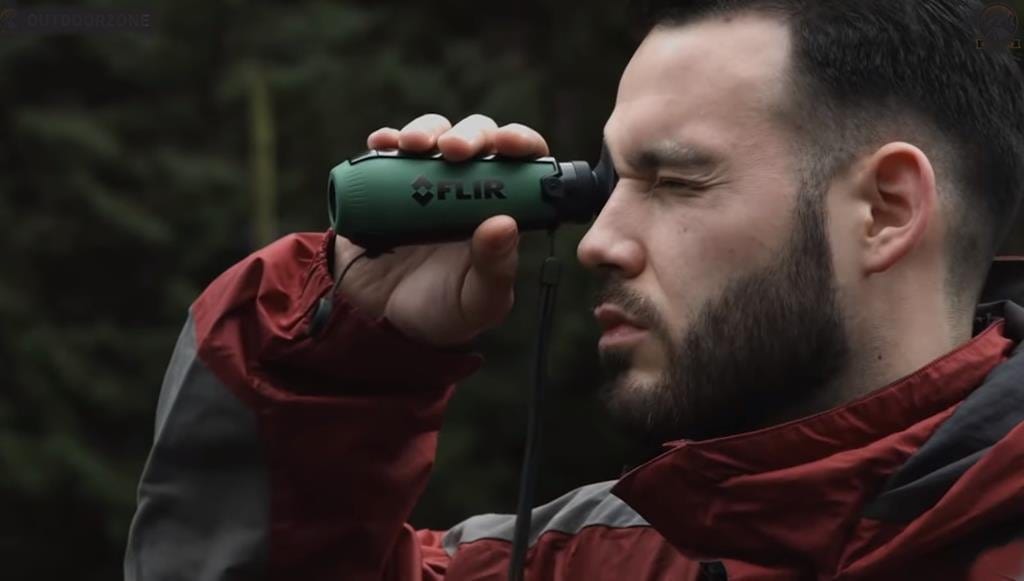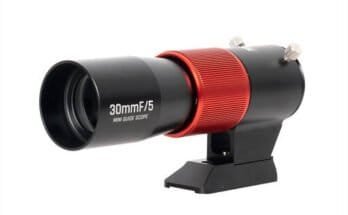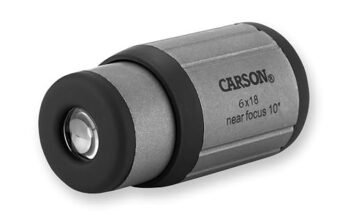Thermal hunting uses heat signatures to detect animals, while infrared hunting requires illumination with IR light. These methods differ in technology and application for effective wildlife tracking.
Embarking on a hunting expedition requires knowledge of the latest tools and techniques to ensure success. Thermal hunting leverages the heat emitted by animals to create a thermal image, allowing hunters to spot prey even in complete darkness or through obstacles like foliage.
On the other hand, infrared hunting involves using IR light, which reflects off the animals and requires an external light source to be effective. While thermal optics detect subtle temperature differences, infrared optics rely on light reflection, making them suitable for different hunting scenarios. Understanding these distinct approaches empowers hunters with the ability to choose the right technology based on environmental conditions and the behavior of the target species. With advancements in sighting technology, both thermal and infrared systems have become pivotal for nocturnal hunting expeditions, conservation efforts, and wildlife management.
Decoding Thermal And Infrared Technologies
Thermal and infrared technologies serve as your eyes in the dark during hunting escapades. They may seem similar, but each works uniquely. Understanding how they transform the night into your ally is key.
Core Principles Of Thermal Imaging
Thermal imaging cameras see the heat every object emits. They create pictures from this heat, also known as thermal energy. Let’s dive into how they make hidden objects seen.
- Objects emit infrared radiation as heat.
- Thermal detectors sense this radiation.
- An image gets formed, showing temperature variations.
- Warm objects stand out against cooler backgrounds.
Fundamentals Of Infrared Detection
Infrared detection focuses on illuminating your targets. Unlike thermal, it relies on a different approach:
- An IR light source emits invisible light.
- Objects reflect this light back.
- Infrared cameras catch the reflection.
- You see the lit-up surroundings on your screen.
Infrared devices do not detect heat. They need an IR source to work effectively.
| Technology | Principle | Usage Condition |
|---|---|---|
| Thermal Imaging | Detects heat signatures | Day and night, through obscurants |
| Infrared Detection | Reflects IR light | Requires IR light source |
Weapons Of The Night: An Introduction To Advanced Hunting Gear

Nighttime brings a new set of challenges for hunters. Advanced hunting gear transforms the dark into an ally. Explore the thrilling world of thermal and infrared hunting. Let’s dive into the high-tech tools that redefine night hunting.
Evolution Of Night Hunting Equipment
- Early hunters relied on moonlight and fires.
- Electric torches brought a shift in night hunting.
- Night vision devices emerged in the mid-20th century.
- Today, hunters use high-tech thermal scopes and infrared cameras.
Thermal and infrared technologies have advanced leaps and bounds. They provide unparalleled vision in the dark. Hunters can now track game with remarkable precision, transforming the night into a hunting playground.
Current Gear: Thermal Scopes And Infrared Cameras
Let’s compare these night-time game changers. Understand how they operate and why each is critical for certain situations.
| Feature | Thermal Scopes | Infrared Cameras |
|---|---|---|
| Function | Detect heat signatures | Use IR light to illuminate |
| Visibility | Effective in total darkness | Require a low level of ambient light |
| Conditions | Perform well in smoke and fog | Can be limited by adverse weather |
| Prey Detection | Show living creatures clearly | Depend on reflectivity |
Thermal scopes shine by showing the heat emitted by objects. They work in complete darkness. You see warm objects like animals, even through barriers like bushes. On the other hand, infrared cameras light up the unseen. They require some light but make invisible details visible. Combine both tools for an ultimate hunting experience.
Choose the right tool for the hunt. Consider the environment, your quarry, and your style. Both thermal scopes and infrared cameras can give hunters the edge needed to succeed after sunset.
Breaking Down The Science: How Thermal And Infrared Devices Work
Understanding the mechanics behind thermal and infrared devices can be quite a revelation. Both technologies empower hunters and nature enthusiasts with remarkable vision capabilities. Yet, they work on different principles. Let’s delve into the science behind these remarkable tools.
Harnessing Heat Signatures With Thermal Technology
Thermal imaging detects temperature variations. It captures heat emitted from objects, translating it into images. Even in total darkness, thermal devices produce clear visuals. This makes them powerful tools for hunting at night.
- Thermal sensors read heat levels.
- Temperature contrasts become visible images.
- Warm-blooded animals stand out against cooler backgrounds.
Unlike traditional night vision, thermal imagers do not require any light. They work in various environments, unaffected by vegetation and weather conditions. This technology offers a significant advantage in tracking prey during the night.
Capturing Light Waves Beyond Visible With Infrared
Infrared devices operate by detecting light not visible to the naked eye. They use infrared illuminators to cast a beam of light. This light reflects off objects and returns to the device’s sensor. The result is a recreation of the scene in the infrared spectrum.
| Infrared Device Components | Function |
|---|---|
| Infrared Illuminator | Emits non-visible light |
| Sensor | Captures reflected light |
Infrared can reveal details hidden in darkness, but it differs from thermal imaging. It relies on light, meaning dense fog or obstacles can hinder its effectiveness. For hunters seeking to identify specific features or movements, infrared can be a valuable tool.
Hunting Application: Thermal Vs. Infrared In Practice
Understanding the distinction between thermal and infrared technology is crucial for hunters. Each method has unique strengths, shaping the landscape of nighttime hunting. In practice, selecting the right technology can make a significant difference in the success of a hunting adventure.
Preferred Scenarios For Thermal Imaging
Thermal scopes excel in total darkness and through obstructive conditions like fog, dust, or smoke. Wildlife body heat creates a distinct contrast against cooler backgrounds, making identification faster and more accurate.
- No light needed: Thermal cameras do not require light to detect animals.
- Dense vegetation: With the ability to see heat signatures, it becomes easier to spot game in thick brush.
- 24/7 use: Day or night, thermal imaging remains effective.
Optimal Conditions For Infrared Use
Infrared devices, also known as night vision, are best suited for scenarios with low light rather than no light. They amplify existing light to provide a clear image.
| Feature | Infrared Advantage |
|---|---|
| Moonlit nights: | Able to utilize ambient light. |
| Short-range: | Provides detailed visuals for closer targets. |
| Budget-friendly: | Generally more affordable than thermal optics. |
Choosing between thermal and infrared depends on the environment and the specific goals of the hunter. Properly deployed, both technologies can greatly enhance the hunting experience. It’s all about using the right tool at the right time.
Performance In The Field: Comparing Effectiveness And Limitations
Out in the wild, hunters rely on advanced imaging technologies to detect their prey. These technologies must perform under various conditions. Both thermal and infrared hunting gear aim to enhance visibility, but they do so in different ways and come with a unique set of strengths and limitations. Understanding these can help a hunter make an informed decision on which equipment to use for their hunting expeditions.
Analyzing The Strengths Of Thermal Optics
Thermal optics stand out for their ability to detect heat signatures. Even in total darkness, these devices can reveal the presence of warm-blooded animals. The strengths of thermal imaging for hunters include:
- Day and night functionality: They work anytime, unaffected by light conditions.
- Penetration through obscurants: They can see through smoke, fog, and light foliage.
- Detection over long distances: Targets can be located from large distances away.
Understanding The Constraints Of Infrared
In contrast, infrared hunting equipment operates differently. These devices sense emitted infrared light, providing visual representations of temperature variance. However, their performance comes with limitations such as:
- Dependency on some light: They cannot function in absolute darkness without an IR illuminator.
- Blocked by common obstructions: Smoke and fog can hinder their effectiveness.
- Shorter range detection: They typically work within a more limited range than thermal optics.
| Technology | Strengths | Limitations |
|---|---|---|
| Thermal Optics | Works in total darkness, sees through some obstacles, detects at long distances | Less detailed imagery, higher cost |
| Infrared | More detailed images, lower cost | Needs light to work, affected by environmental conditions, short-range |
In summary, while thermal optics offer robust features for detection, infrared tools may provide more details under right conditions. By comparing these features, hunters can choose the right technology for their specific needs in the field.
Choosing Your Ally: Selecting The Right Gear For Your Hunting Needs
Hunters need the best equipment for effective tracking. Thermal and infrared devices transform night hunts. Both have their unique benefits. Your choice changes the game. Thermal imaging spots heat. Infrared needs some light but is stealthier. Now, let’s decipher what to consider for each technology.
Considerations For Purchasing Thermal Imaging Devices

Thermal imagers capture heat emitted by living things. They reveal hidden game, day or night. Before buying, think about these points:
- Distance: Check device range. How far can it detect heat?
- Resolution: Higher means clearer images. What’s the pixel count?
- Battery Life: Long sessions need long life. How many hours does it last?
- Durability: Outdoor gear must be tough. Can it handle rough conditions?
- Price: Balance cost with features. Is it worth the investment?
Key Factors When Investing In Infrared Technology
Infrared optics need minimal light and are great for covert tracking. Here’s what to watch out for:
| Aspect | Details to Consider |
|---|---|
| Sensitivity: | Can it pick up faint light sources? |
| Type: | Monocular, binocular, or goggles? |
| Functionality: | Does it offer photo or video options? |
| Weight: | Is it light enough for comfort? |
| Cost: | Does it fit your budget? |
Selecting the right technology matters. Match your hunting style with your gear. Use these tips as a guide. Pick what gives you an edge in the wild. Happy hunting!
Frequently Asked Questions
What Is Thermal Hunting Technology?
Thermal hunting utilizes thermal imaging to detect heat signatures. This technology helps hunters identify game by sensing temperature differences, even in complete darkness or obscured conditions. It’s effective for locating warm-blooded animals during day or night.
How Does Infrared Hunting Differ?
Infrared hunting relies on light just below the visible spectrum. Unlike thermal imaging, infrared devices need a light source, often built-in, to illuminate targets. It’s less effective in total darkness without this source, differentiating it from thermal technology which requires no light.
Can Thermal Scopes See In Daylight?
Yes, thermal scopes can detect heat signatures in daylight. They are versatile, allowing hunters to spot game in various lighting conditions. The adaptability of thermal scopes makes them popular for both day and night hunting scenarios.
Are Infrared Night Vision Devices Costly?
Infrared night vision devices can vary in price. Some entry-level models are relatively affordable, while advanced systems with enhanced features might be costly. The price generally reflects the device’s quality, capabilities, and the technology it uses.
Conclusion
Exploring the nuances between thermal and infrared hunting tech, we’ve uncovered key differences. Thermal imaging excels in detecting heat signatures, while infrared boosts visibility in low-light conditions. Both have their distinct uses in the field, enhancing a hunter’s experience. Opt for thermal for warmth tracking or infrared for detailed night views.
Choose wisely to elevate your hunting game!



